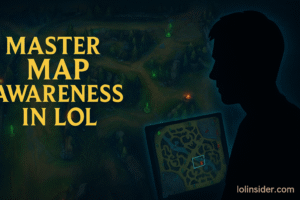For over a decade, Korea has been synonymous with dominance in League of Legends. While other regions occasionally rise to the challenge, Korean teams remain the gold standard at Worlds. With legendary orgs like T1, Gen.G, and DAMWON KIA writing history, many fans and analysts wonder: what makes Korean teams so consistently strong on the biggest stage?
This article breaks down the key reasons behind their reign—ranging from cultural dedication to esports, elite infrastructure, and the unique playstyle that has made Korea the most feared region in professional League of Legends.
1. The Esports Culture in Korea
Early Adoption of Esports
South Korea has been the epicenter of esports since the 1990s, long before League of Legends existed. StarCraft pros were treated like celebrities, and PC bangs (gaming cafés) fueled grassroots competitive gaming culture. By the time LoL launched in 2009, Korea already had the infrastructure to nurture world-class talent.
Respect for Professional Gamers
Unlike many regions where esports was initially dismissed, Korea embraced it. Pro players are often seen as athletes, with dedicated fans, sponsors, and recognition from mainstream media. This cultural backing encourages younger players to dream of going pro—and take it seriously.
2. World-Class Infrastructure
Training Facilities
Top Korean organizations invest in state-of-the-art team houses and training facilities, often resembling professional sports clubs. Players train in optimized environments with access to coaches, nutritionists, and sports psychologists.
Coaching Staff and Analysts
Korean teams emphasize structured coaching systems. Instead of relying solely on player intuition, they have:
- Head coaches for strategy.
- Analysts for reviewing drafts and data.
- Position coaches to refine mechanics.
This systematic approach ensures no weakness goes unaddressed.
3. The Korean Work Ethic
The phrase “Korean discipline” often surfaces when discussing their dominance.
- Training Hours: Many Korean pros practice 12–14 hours daily.
- Consistency: Even outside Worlds, their scrim intensity remains high.
- Sacrifice: Players often live away from family and dedicate their teens entirely to esports.
This relentless drive is why Korean teams rarely fall behind in macro fundamentals, even when individual talent is comparable to other regions.
4. The Korean Playstyle
Korean League of Legends is defined by discipline, coordination, and macro play.
Characteristics:
- Safe Early Game: Avoid unnecessary risks, minimize mistakes.
- Objective Focused: Dragons, Heralds, and towers are prioritized over flashy plays.
- Teamfight Perfection: Korean teams excel in coordinated 5v5s.
- Adaptability: They can switch from slow scaling to aggressive drafts depending on the meta.
This contrasts with regions like China (LPL), which thrives on aggression, or NA, which sometimes relies too heavily on individual carry performances.
5. Depth of Talent Pool
Korea’s solo queue ladder is brutal. With millions of players in PC bangs, the Challenger and Grandmaster ranks are stacked with talent.
Many pros start grinding the ladder from a very young age, facing higher competition compared to other regions. This ensures a constant influx of mechanically gifted rookies who are battle-tested by the time they join the LCK.
6. Strong Domestic League (LCK)
The League of Legends Champions Korea (LCK) is considered the most competitive and strategically refined domestic league in the world.
- High Skill Standard: Even bottom-tier LCK teams would dominate in other regions.
- Best-of-3/Best-of-5 Format: Unlike NA or EU’s Bo1-heavy schedules, LCK trains players in long series—perfect preparation for Worlds.
- Meta Innovation: From lane swaps to vision control, many global strategies originated in Korea.
7. International Experience
Korean teams consistently attend international tournaments like MSI and Worlds, often reaching semifinals or finals. This gives them unparalleled exposure to different regional styles.
Moreover, Korean imports across LCS, LEC, and LPL also spread their discipline and playstyle globally—further strengthening Korea’s influence on the meta.
8. Legendary Teams and Players
Korea’s dominance is also tied to iconic figures who shaped the game:
- Faker (T1): Widely regarded as the greatest of all time.
- Bengi, Peanut, Canyon: Junglers who redefined the role.
- Keria & Mata: Support players who showcased the impact of vision and roams.
These players not only inspired future generations but also set the benchmark for excellence that Korean rookies aspire to match.
9. Adaptability Across Eras
One of Korea’s most impressive traits is their ability to adapt across metas and patches.
- 2013–2015: Controlled macro and rotations (Samsung White, SKT).
- 2017–2020: Jungle carry metas (DAMWON KIA, Griffin).
- 2022–2023: Bot lane focused play (Gen.G, T1).
No matter how the game evolves, Korean teams refine their style to stay relevant.
10. The Mental Game
Map awareness, mechanics, and drafts win fights—but mindset wins tournaments. Korean pros are known for their mental resilience.
- Losing one game rarely tilts them.
- They reset quickly between matches in Bo5s.
- They handle the pressure of huge audiences better than most regions.
This composure often makes the difference in high-stakes Worlds finals.
Conclusion
Korean teams dominate Worlds because of a perfect storm of culture, infrastructure, discipline, and talent. With unmatched dedication, strong coaching systems, and a history of excellence, Korea has set the global standard for competitive League of Legends.
While other regions occasionally dethrone them, Korea’s ability to adapt, rebuild, and return stronger is why they remain perennial favorites at Worlds.
For aspiring players, the lesson is clear: mechanics win lanes, but discipline and map awareness win championships.







